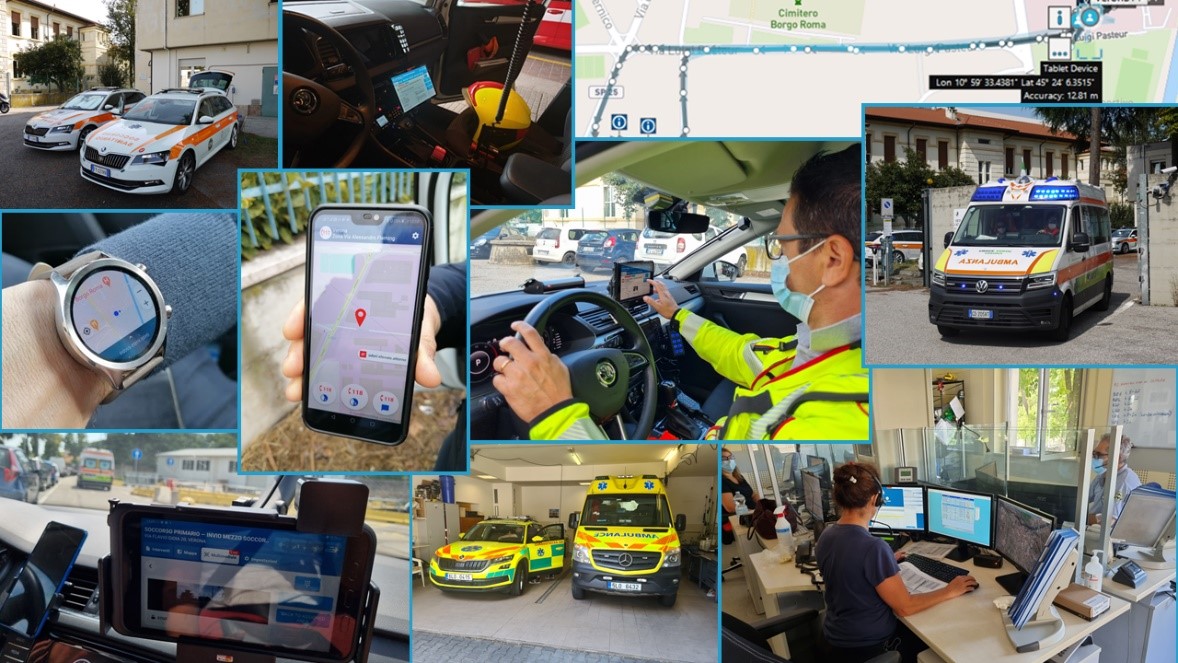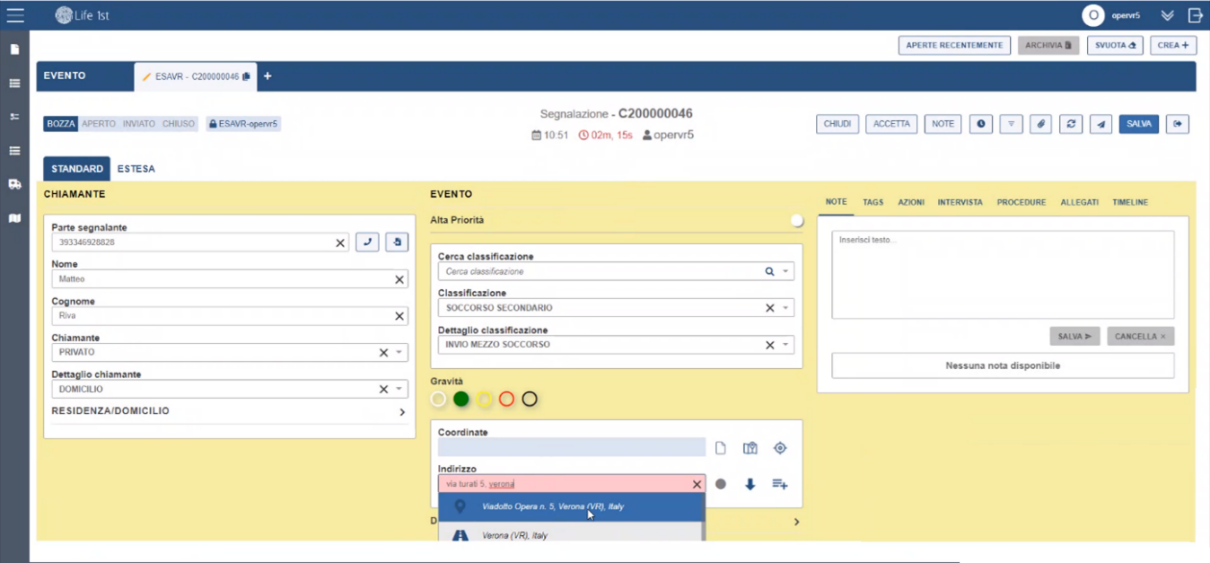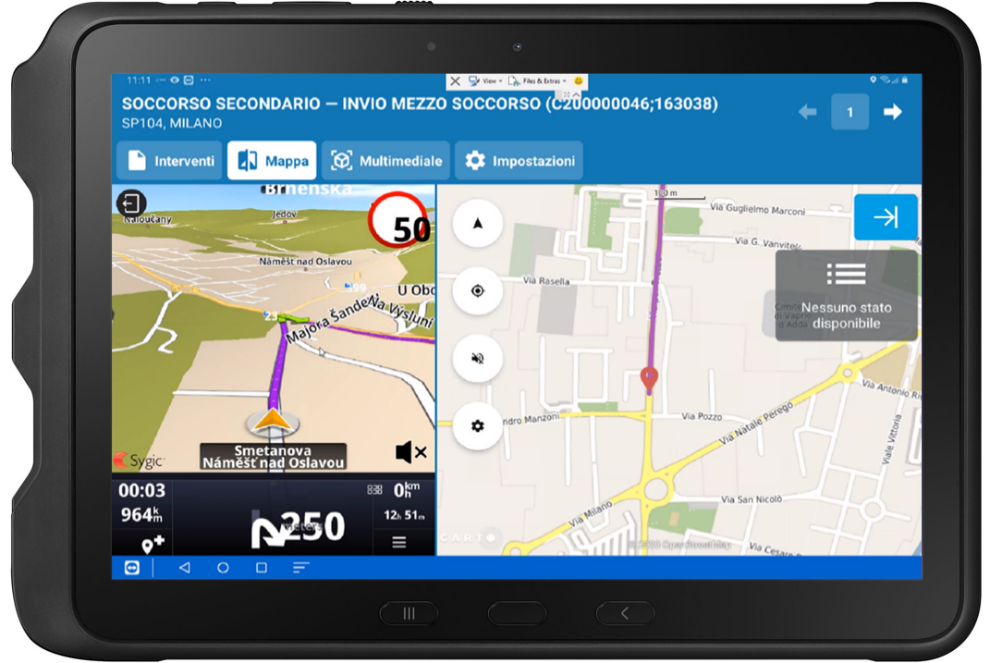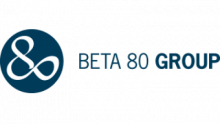
Objectives of the service
Emergency call centres (Public-Safety Answering Point) were significantly impacted by the COVID-19 pandemic in terms of changes in the volumes of calls and incident operation procedures. Generally, there was an increase in emergency medical calls and a decrease in non-medical emergency calls (fire and rescue, police). Almost every country faced tremendous call traffic dates (up to triple) during second part of March. This increase usually coincides with the state of emergency announcement (lockdown restrictions) or first confirmed cases.
[source: EENA, Report: Impact of COVID-19 on PSAP activities].
The aim of the First RESPonse project was to help citizens and health professionals (ambulances dispatchers, first responders, hospitals) living in Italy to deal with the challenges of the coronavirus outbreak causing increased workload on ambulances and pre-medical services with the need of better coordination during the incidents. The project focused on entire process of medical emergency request, from the patient's distress call, in-field treatment, to the hospitalization, using space technology and technical enhancements to make the process as affective as possible. The key approaches are applicable for common medical cases operating daily and can be utilized also outside Italy.
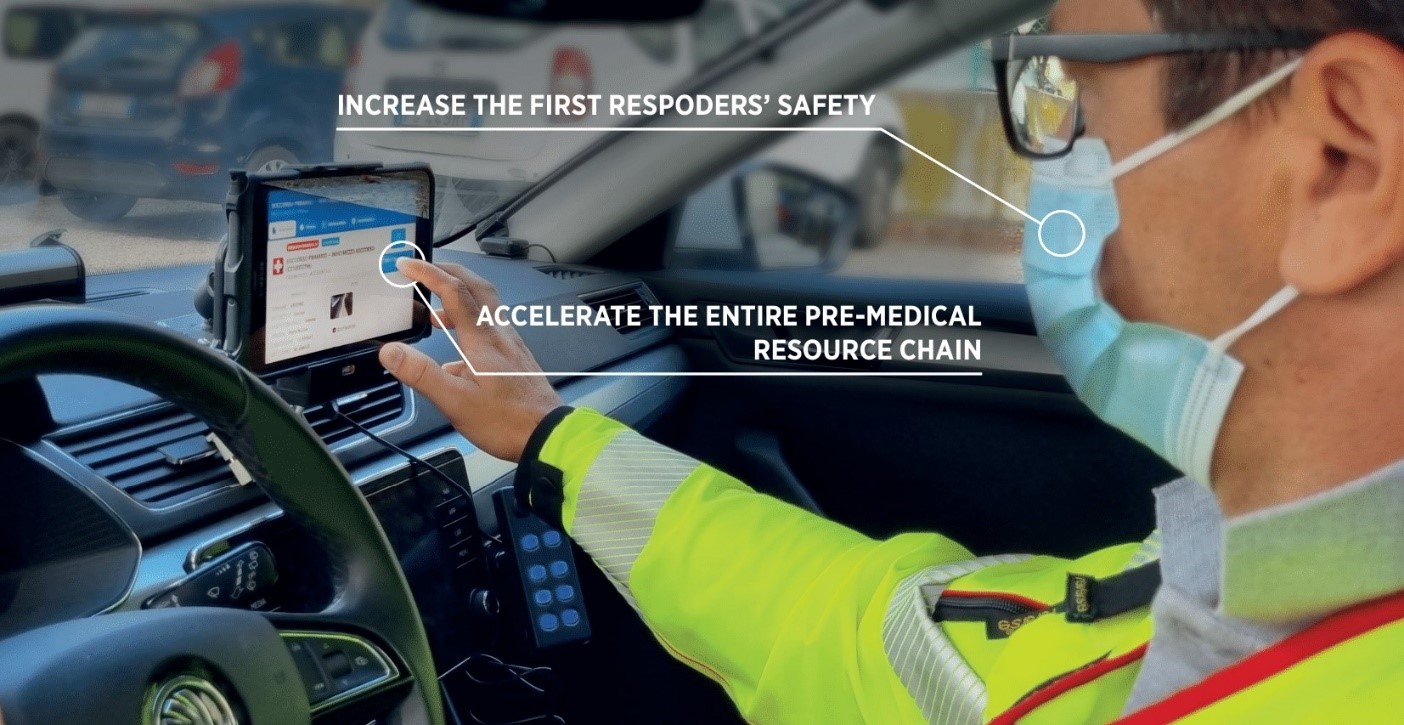
The FIRST RESPonse service ambitions to:
-
Accelerate the entire pre-medical resource chain by up to 20 % thanks to fluid workflow connecting all operators engaged in the rescue operations
-
Increase the first responders’ safety during their operations
-
Improve situational awareness for patients
The First RESPonse project allowed cooperation and sharing of expert knowledge of two internationally recognized companies in field response. GINA Software is an internationally recognized top player for the development of mobile solutions for emergency situation with features containing receiving of dispatch list, tracking, navigation, status and chat functions for first responder which was leveraged to solution developed and used during pandemic in Italy. Beta 80 is the Italian leading vendor in Emergency Control Room applications, providing the official 112 app in Italy and their systems were adjusted to new conditions faced during medical crisis. The Consortium together completed the integration of the platforms to provide end-to-end (from the emergency call ̶ to the hospital delivery) chain of information completely digitized and safe for the citizen.
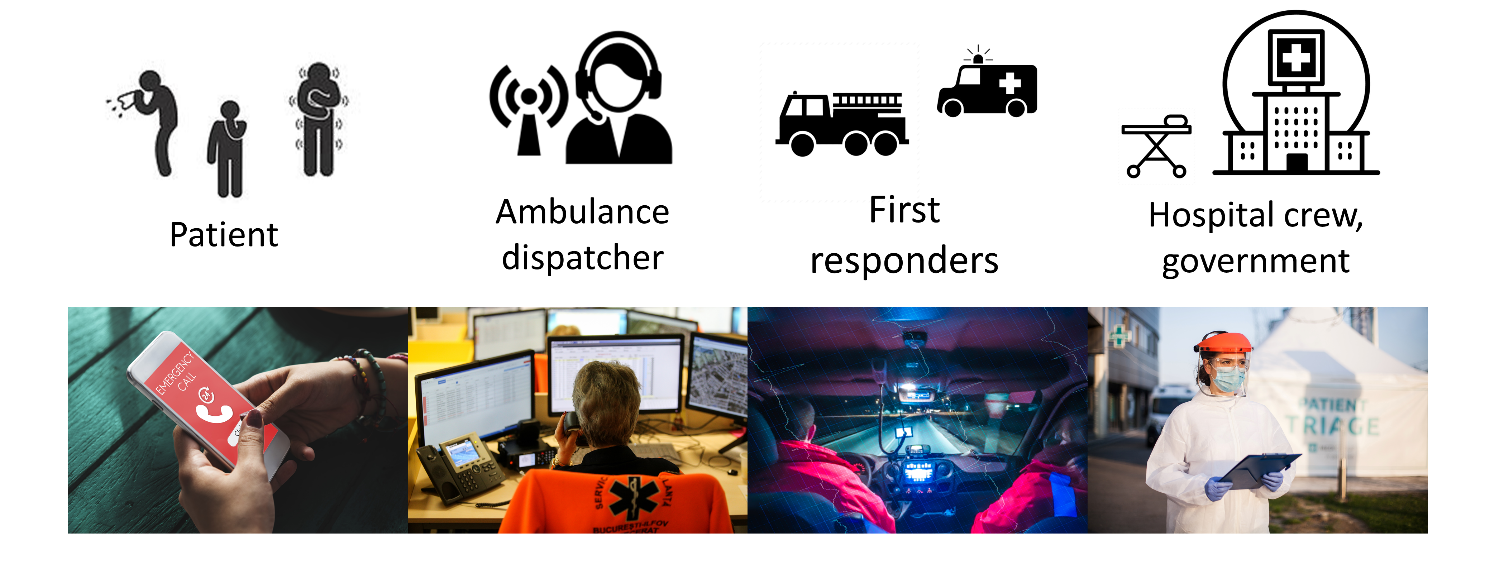
Users and their needs
Four groups of users were involved in the project, and have different service needs.
Patients (or callers) needed to:
-
reach an operator in case of medical emergency whenever they call an ambulance, so that they do not have to wait for help more than necessary.
-
efficiently (promptly and precisely) provide relevant information sharing the incident description and personal information, so that the crew can use this information to help them faster.
-
need to have an option to call an ambulance utilizing various smart devices (phones, watches), so that the help is easily accessible.
-
Ambulance dispatchers need a tool to communicate with the mobile app users sending them notifications, so that the users have access to valid, authorized, and trusted information.
Ambulance dispatchers needed to:
-
communicate digitally with the crew regarding the scene specification, ambulance status, and the condition of patients, so that the crew can make decisions based on real-time information.
First responders needed to:
-
triage patients in the field with consultancy with a dispatcher or a doctor, so that the triage is underlined by high expertise.
-
identify the patient quickly and accurately, so that decisions can be made based on correct information.
-
easily orient and navigate in changing conditions in the field, so that they can provide help faster.
-
call for help when they are in danger, so that a dispatcher can send the help to the scene.
-
communicate with dispatchers in all circumstances, so that they do not rely on GSM or radio signal coverage.
-
provide a quick incident report of the situation when they arrived at the scene, so that the situation can be instantly assessed by ambulance dispatcher.
-
know where the other units heading to the same incident are, so that they can either follow the already arrived ones, or see the help is on the way.
-
start going to the scene within the legislative time.
Hospital crew needed to:
-
know the handover place, number of arriving patients, their identification, and medical states, so that they can arrange the receipt.
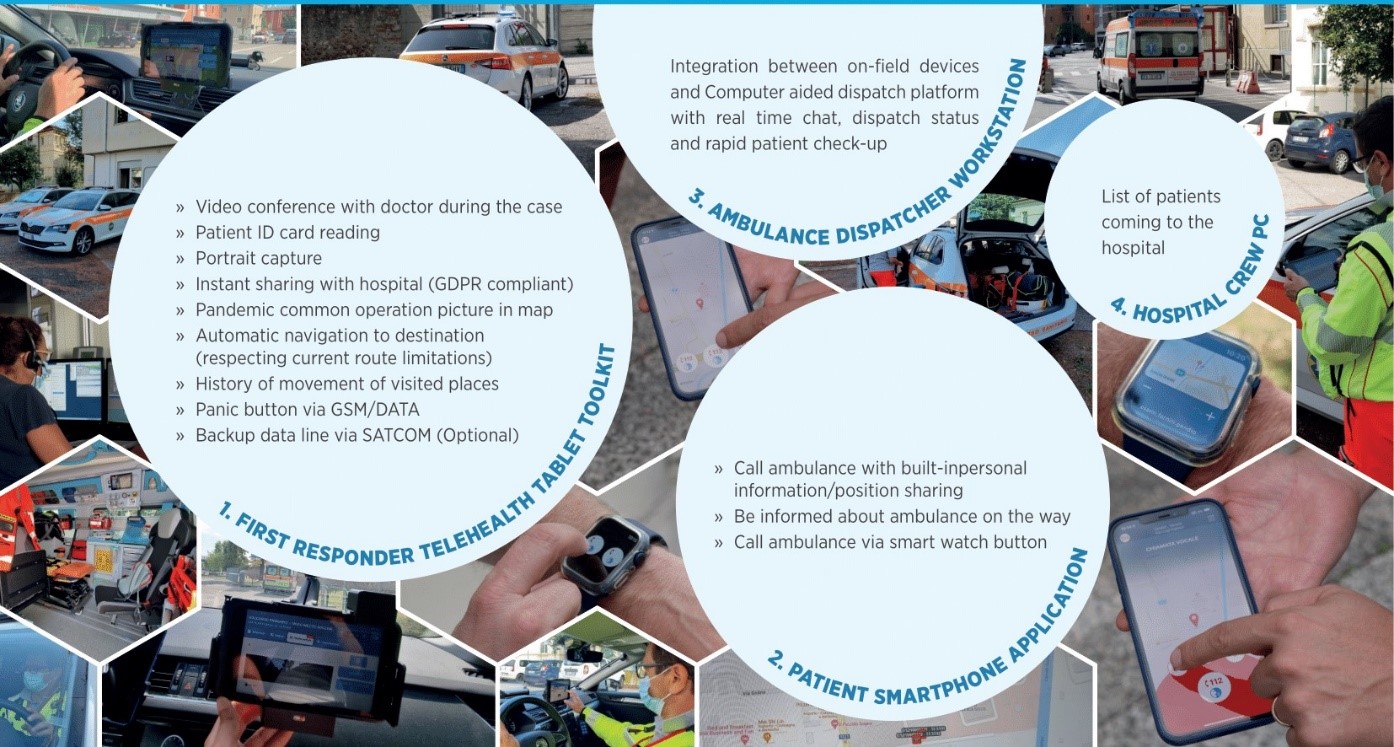
Service/ system concept
The following diagram describes the pre-medical business chain from patient call to patient admission to the hospital. The process starts with patient distress call via Where Are U app (Beta 80 S.p.A, 1st deliverable). The localization of the patient is done via GNSS satellite, and the information is transmitted via GSM data network. PSAP backend server (Life 1st in Italy) processes the distress call on the server side and is handled by ambulance call taker. Based on the case classification and urgency, ambulance dispatcher dispatches first responders to solve the case. The dispatch process is handled by System integration (Beta 80 S.p.A + GINA Software, 2nd deliverable) from PSAP solution to GINA navigation server. GINA navigation server takes care to distribute the dispatch list to ambulances with tablets using COVID first responders field software (GINA Software, 3rd deliverable). The tablets use GNSS localization and GSM data communication. To cover also places without GSM data connectivity, SATCOM via Iridium GO! is integrated as a backup communication channel. The interconnection and effective communication between the patient and the dispatcher and the dispatcher and the first responder are crucial to achieve project objectives. The last component is Situation dashboard (GINA Software, 4th deliverable) which serves information to hospitals.
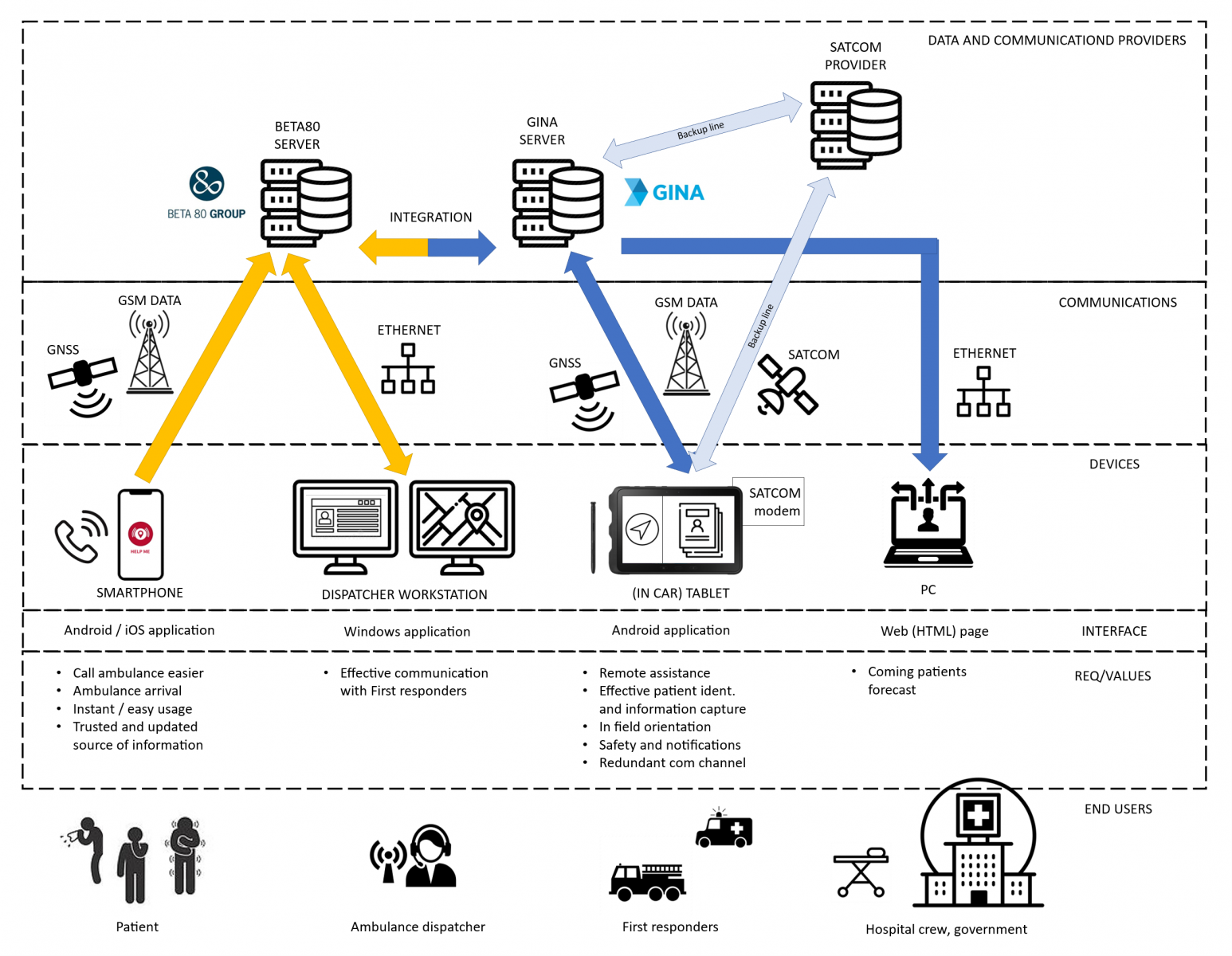
Space Added Value
Satellite Navigation (SatNav) is a crucial component for first responders to scene navigation during an event. Localisation is also needed for positioning of the caller and first responders’ ambulances. The same way, it is used for generating the history movement track logs.
Satellite Communication (SatCom) is a communication system that can be used as data transfer channels for remote (no GSM/DATA) areas and/or back-up network in case of cellular network failure.
Current Status
The GINA Software and Beta 80 consortium started the First RESPonse in July 2020 and finished the project at the end of September 2021. During the whole project, there was great involvement with the user uptake reaching almost 9000 incidents. This high number was achieved thanks to user’s trust to the service and integration to production dispatching software in the Czech Republic containing real emergency cases. The service also succeeded in helping citizens in other difficult times, when a tornado hit the Czech Republic at the begging of summer 2021.
Major ambition of the First RESPonse project was to speed-up the entire pre-medical resource chain by up to 20 %. The goal with measured acceleration ranging from 12 – 17 percent has been almost reached after service fully deployed compared with quartal before the service started. Last three piloting months average was 14.1 %, last piloting month was 16.9 %.
The consortium wants also to leverage the experience and feedbacks from the pilots during upcoming tradeshows and exhibitions. The project was also mentioned in the biggest Czech radio Plus on 4 December 2020.
